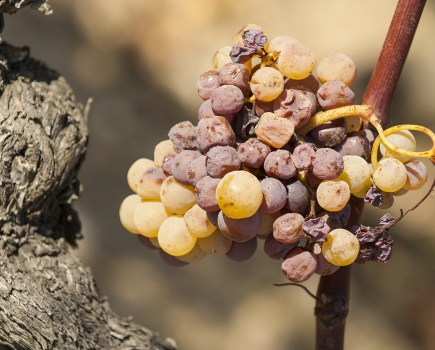Chris Cooper and Rob Saunders, vine specialists in the Hutchinsons Horticultural team, discuss the season to date in vineyards.
Vines are generally carrying moderate to good crops, assisted by the warm weather at the end of June. Following a very late start, vines have shot through growth stages, with growing degree days being 25% higher than the equivalent period last year, leading to an early flowering, which potentially allows a longer period for fruit development. The implication of this is that it may be possible to ripen a larger crop than would otherwise be the case, but there is a long way to go, and the immediate concern this month is to start on canopy management and be vigilant against disease and pests.
Botrytis is the number one disease problem at flowering, spores gaining entry via the multiple scars left at cap fall and initiating infections, many of which will remain symptomless at first, but which have the potential to reduce both the quality and quantity of the crop.
Scala (pyrimethanil) is uniquely effective when applied at late flower, as it moves within plant tissue, cleaning up recently established infections and bringing about beneficial and measurable reduction in laccase levels in the berries. After flowering, small green berries are less susceptible to infection but will benefit from protection with Sercadis (fluaxapyrad), applied primarily for powdery mildew control, but known to have some botrytis activity as well. “Wherever possible, I attempt to sequence fungicide programmes and timings to utilise any secondary effects to best advantage, and this is a great example of that approach,” says Rob.
Plan to bring in the heavy weight Botryticides at bunch closure, but at this time it is not always easy to achieve good cover, and this is where canopy management can make a major contribution.
The first generation of Light Brown Apple Moth (LBAM) has been detected and treated on a number of sites. Continue trapping for the second generation, the first visible sign of which is often bunch botrytis which has been prompted by caterpillar feeding inside the clusters. Likewise continue trapping for Spotted Winged Drosophila (SWD), which gives you an indication of the pest pressure on your site. For more information on SWD growers should refer to the excellent AHDB website.



